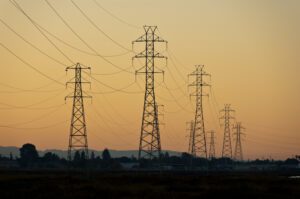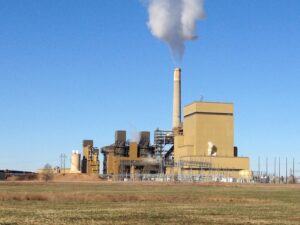When I see estimates of premature deaths attributable to coal-fired power plants, I usually take the data with a grain of salt. It’s not that I don’t trust researchers to do their best to calculate the numbers, I just have trouble believing adverse effects can be tallied precisely. There are so many variables that must be considered and obtaining reliable estimates seems nearly impossible to me.
Study Finds Significant Adverse Effects
Nonetheless, a lot of research has been done in an attempt to quantify the social costs of coal power generation. In early January, the journal Nature Sustainability published findings from a study conducted by Jennifer A. Burney, environmental scientist and assistant professor at the University of California, San Diego. In her work, titled “The downstream air pollution impacts of the transition from coal to natural gas in the United States,” Burney analyzed the human health, crop yield, and regional climate effects of U.S. power plant retirements and additions during the period from 2005 to 2016.
Notably, Burney estimated that the shutdown of coal-fired units over the 12-year timeframe saved 26,610 lives and 570 million bushels of corn, soybeans, and wheat in the immediate vicinities. The study received a lot of media coverage, as the numbers are staggering. On a personal website that she maintains, Burney wrote, “On average, counties that had a coal-fired unit shut down either within the county or within about 25 [kilometers] of the county saw a 0.9% drop in local mortality rates after the shutdown. Counties producing corn, soybeans, or wheat saw an average increase in yields of 7.2%, 6.3%, and 4.0%, respectively, after a shutdown.”
Burney goes on to say, “If we assume that plants left in operation would have the same effects if shut down, we can also estimate the lives and crops lost due to coal-fired plants still in operation: ~329,000 lives and 10.2 billion [bushels].” She claims that the estimates are conservative, because if transport-related impacts are included out to 200 kilometers, Burney estimated 38,200 lives and 4.8 billion bushels were saved by the plant shutdowns, and 510,000 lives and 75 billion bushels were lost over the 12-year period as a result of coal facilities that remain.
Many Factors to Consider
One of the often-cited culprits of early deaths is PM2.5, that is, particulate matter with diameters of 2.5 micrometers (µm) and smaller. For perspective, the average human hair has a diameter of about 70µm, so PM2.5 particles are about 1/28 the width of a hair and smaller. While coal power plants are notable PM2.5 emitters, there are also plenty of other sources.
On its website, the New York State Department of Health lists the following outdoor sources of PM2.5 emissions: car, truck, bus, and off-road vehicle exhausts; other operations that involve the burning of fuels such as wood and heating oil; and natural sources, such as forest and grass fires or volcanic eruptions. It says fine particle emissions can travel hundreds of miles carried by the wind. There are also indoor sources of PM including tobacco smoke, cooking (such as frying, sautéing, and broiling), burning candles or oil lamps, and operating fireplaces and fuel-burning space heaters such as kerosene heaters. It’s easy to imagine that a decrease in the percentage of people who smoke would reduce mortality rates. Similarly, switching from oil-fueled or kerosene heating to electric or natural gas heating could have an effect, as could wildfires in an area (or lack thereof).
Concerning crop production, average yields have been increasing annually for more than half a century, sustained primarily by continued improvements in genetics and crop production technologies. The five-year average corn yield in the U.S. increased from 78.2 bushels/acre in 1970 to 173.4 bushels/acre in 2018. For perspective, there were about 14.3 billion bushels of corn, 4.4 billion bushels of soybeans, and 1.9 billion bushels of wheat produced in the U.S. in 2018. Therefore, if Burney’s data is correct and 75 billion bushels were lost over the 12-year period as a result of burning coal, it’s hugely significant and hard to believe.
Questioning the Method
So, I contacted Burney and asked if she had considered all of the other possible variables in her research. She responded, “You are of course right that many other things contribute to air pollution and air pollution related deaths. If you were just looking at one power plant unit, and you saw for example that when it shut down, mortality rates dropped, you would absolutely want to and need to account for everything else going on nearby in order to be certain that it was the unit shutdown, and not something else, that caused the change in local death rate.
“The nice thing about the U.S. as a place to do this study is that units shut down at many different sites, at different moments in time. Since the comparison is after-before, averaged across all sites, in order for ‘something else local’ to be causing the change in outcomes, it would have to be happening all over the country, at just the moment these units were shutting down. This becomes statistically much less likely in a large sample of locations with plants shutting down at different moments,” Burney said. “Second, I do include controls for time trends to account for things like improving yields, better plant pollution controls, etc. So, the way to think about yield losses/gains is that they are lower/higher than they would have been had nothing changed (inclusive of growth trends).”
While I intend to do more research on the subject, these findings are eye-opening. ■
—Aaron Larson is POWER’s executive editor.










